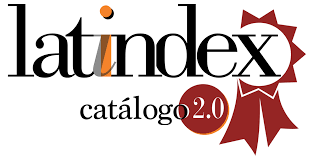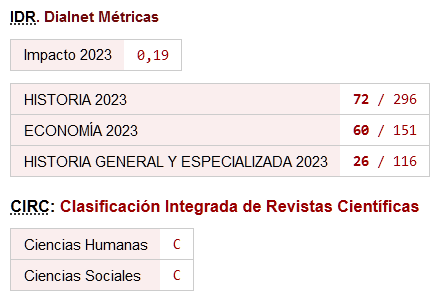The role of accounting in the industrialization efforts of the Ottoman Empire in the 19th century
DOI:
https://doi.org/10.26784/issn.1886-1881.v14i27.315Palabras clave:
Industrialization, Ottoman Empire, Merdiban Method, Accounting HistoryResumen
When the need for industrialization surfaced in the 19th century, Ottoman Empire aimed to establish state-led, profit-oriented enterprises after the Imperial Edict of 1839, which is also known as Tanzimat. Experienced accountants of the state tried to do the investment calculations of an iron factory in the 1840s (Istanbul) by benefiting from the merdiban accounting method, which was initially developed to record the revenues and expenditures of the state. This study contributes to the relevant literature by analyzing the adequacy of this statist-centralist accounting method within a profit-oriented environment and its role in this failed attempt towards industrialization. Merdiban allows the separation of investments as actual construction, still projected and shows the payment status of investments in details. As one of the first profit oriented investment project in the history of the Ottoman Empire, accountants mislead critical pieces of information like plans for procurement of raw materials, projected sales, payback time, capacity and depreciation. Findings indicate that neither accountants nor the method were ready to operate in a for-profit organization, eventually resulting diminish of this old accounting method in 1879.
Descargas
Citas
Akarli, A. O. (2001). Growth and retardation in the Ottoman economy, the case of Ottoman Selanik, 1876-1912 (Doctoral dissertation), London School of Economics and Political Science. United Kingdom.
Atalık A. www.ekodialog.com, May 2011.
Apak, S., Erol. M. and Yerebasmaz, V. (2012). A Credit Institution that Introduced Turkey to the Double-entry bookkeeping Method and the Concept of the Financial Statement in the second Half of the 19th Century: The Ottoman Bank. 13th World Congress of Accounting Historians. July 17-19. Newcastle.
Auyeung, P. & Ivory, P. (2003). A Weberian model applied to the study of accounting stagnation in late Qing China. Accounting, Business and Financial History 13(1): 5-26. https://doi.org/10.1080/09585200210164566b
Boyns, T., Edwards, J.R. and Nikitin, M. (1998). The development of industrial accounting in Britain and France before 1880: a comparative study of accounting literature and practice. European Accounting Review 6(3): 393-437. https://doi.org/10.1080/713764730
Boyns, T., & Edwards, J. R. (1997). Cost and management accounting in early Victorian Britain: a Chandleresque analysis?. Management Accounting Research, 8(1), 19-46. https://doi.org/10.1006/mare.1996.0032
Celnarova, X. (2002). Türklerin Akdeniz Kültürel Bölgesine Entegrasyonu (Integration of Turks to Mediterranian Culture). In Türkler Ansiklopedisi (Turkish Encyclopaedia) (Vol. 7). Ankara.
Chandler, A. D. (1990). Strategy and structure: Chapters in the history of the industrial enterprise (Vol. 120). MIT press.
Clark, E. C. (1974). The Ottoman industrial revolution. International Journal of Middle East Studies, 5(01), 65-76. https://doi.org/10.1017/S0020743800032797
Clark, E. C. (1992). Osmanlı Sanayi Devrimi. Osmanlılar ve Batı Teknolojisi (Ottoman Industrial Revolution, Ottomans and Western Technology). Ed. Ekmeleddin İhsanoğlu. Istanbul University Faculty of Literature Publishings. 53-120.
Çabuk, A. Saygılı, T.A. and Oğuz, M. (2016) Auditing of a Waqf in the Ottoman Empire at the Beginning of 19th Century, Papers of the Turkish Delegation, 14th World Congress of Accounting Historians, June 25-27, Italy, 459-481.
Duran, S. (2012). The Influences of the French Accounting Culture on Ottoman Accounting Thought in the Second Half of the 19. Century, 13th World Congress of Accounting Historians. July 17-19. Newcastle.
Edwards, J. R., Boyns, T. and Anderson, M. (1995). British cost accounting development: continuity and change. The Accounting Historians Journal, 1-41.
https://doi.org/10.2308/0148-4184.22.2.1
Elitaş C., Güvemli, O., Erkan, M., Aydemir, O., Özcan U., Oğuz M. (2008) Accounting Method Used by the Ottomans for 500 years: Stairs (Merdiban) Method. Turkish Republic Ministry of Finance Strategy Development Unit. Ankara. Turkey.
Erkan, M., Elitaş, C., Aydemir, O., Özcan, U. (2007) Accounting System of the Ilhanians and a Sample Practice. Balkan Countries 1st International Conference on Accounting and Auditing. Edirne. Turkey.
Evered, E. (2012). Empire and Education Under the Ottomans: Politics, Reform and Resistance from the Tanzimat to the Young Turks (Vol. 32). IB Tauris.
https://doi.org/10.5040/9780755607723
Ezzamel, M., Hoskin, K. and Macve, R. (1990). Managing it all by numbers: a review of Johnson & Kaplan's 'Relevance Lost'. Accounting and business research, 20(78), 153-166. https://doi.org/10.1080/00014788.1990.9728873
Faroqhi, S. (2005). Ottoman cotton textiles, 1500 to 1800: the story of a success that did not last. Ottoman Cotton Textiles, 21-24.
Fujimura, D. (2012). The Old Du Pont Company's accounting system lasting a hundred years: An overlooked accounting system. The Accounting Historians Journal 39(1): 53-88. https://doi.org/10.2308/0148-4184.39.1.53
Güvemli, O., & Güvemli B. (2007). The Birth and Development of an Accounting Method in the Middle East (Merdiban Method). The Fifth Accounting History International Conference, August 9-11. Banff. Canada.
Güvemli, O. (1998). Türk Devletleri Muhasebe Tarihi - Osmanlı İmparatorluğu Tanzimat'a Kadar (Accounting History of Turkish States: Ottoman Empire, Until Tanzimat). Vol.2. Avcıol Publishing. Istanbul.
Güvemli, O. (2000). Türk Devletlerinde Muhasebe Tarihi - Osmanlı İmparatorluğu Tanzimat'tan Cumhuriyet'e. (Accounting History in the Turkish States: Ottoman Empire, From Tanzimat to the Republic). Vol. 3. Publication of Istanbul Sworn-in Chamber of Certified Public Accountants. Istanbul.
Güvemli, O., Toraman C., & Güvemli B. (2015) State Accounting in the Ottoman Empire, Anatolian Accounting Recording Culture. Ankara: Public Oversight Board of Turkey (KGK).
İnalcık, H., & Quataert, D. (1994). An economic and social history of the Ottoman Empire, 1300-1914. Cambridge University Press.
Issawi, C. (1980). De-industrialization and Re-industrialization in the Middle East since 1800. International Journal of Middle East Studies, 12(04), 469-479.
https://doi.org/10.1017/S0020743800031251
Karaoğlu, O. (1994). 19. Yüzyıl Osmanlı Sanayileşme Teşebbüsleri ve Zeytinburnu Demir Fabrikasının Kuruluşu (Unpublished master's thesis). Istanbul University.
Kaya, M.A. Güvemli, O. and Göreke, A. (2016). Significant Changes in the Accounting Thought of the Ottoman Empire in the Mid 19th Century (1839-1885). 14th World Congress of Accounting Historians. June 25-27. Pescara. Italy (47-76).
Kulaksız H. (2006) Public Financial Administration of Ottoman Empire Betwen the Years 1838-1880 and Muhasebat Genel Müdürlüğü ( General Directorate of Public Accounts), 11th World Congress of Accounting Historians. July 19-22. Nantes, France.
Kurt, M., Çakir, B. and Demir, K. (2016). Türkiye'de Modern Yönetimin Erken Dönemleri: Geç-Osmanli Döneminde Fabrikalar, Sanayi Mektepleri ve Yabanci Uzmanlar / Early Years of Modern Management in Turkey: Factories, Industrial Schools and Foreign Specialists in the Late Ottoman Period. Istanbul Üniversitesi Isletme Fakültesi Dergisi, 45, 154.
Martínez‐Galarraga, J., & Prat, M. (2015). Wages, prices, and technology in early Catalan industrialization. The Economic History Review. 69(2). 548-574. https://doi.org/10.1111/ehr.12127
McLean, T. (2006). Continuity and change in British cost accounting development: the case of Hawthorn Ieslie, shipbuilders and engineers, 1886-1914. The British Accounting Review, 38(1), 95-121. https://doi.org/10.1016/j.bar.2005.10.001
McLean, T., McGovern, T., & Davie, S. (2015). Management accounting, engineering and the management of company growth: Clarke Chapman, 1864-1914. The British Accounting Review, 47(2), 177-190. https://doi.org/10.1016/j.bar.2013.11.001
Mendels, F. F. (1972). Proto-industrialization: the first phase of the industrialization process. The journal of economic history, 32(01), 241-261. https://doi.org/10.1017/S0022050700075495
Öztürk, S. Osmanlı'nın Sanayileşmesi (Industrialization of the Ottoman). www.osmanli.org May 2016.
Pamuk, Ş., & Williamson, J. G. (2011). Ottoman de‐industrialization, 1800-1913: assessing the magnitude, impact, and response. The Economic History Review, 64(s1), 159-184. https://doi.org/10.1111/j.1468-0289.2010.00560.x
Pamuk, Ş. (2008). Osmanlı'dan Cumhuriyet'e Küreselleşme, İktisat Politikaları ve Büyüme. Türkiye İş Bankası Kültür Yayınları. Istanbul.
Prime Ministry Ottoman Archives, Hazine-i Hassa Journals, No.1 (Hegira. 19.03.1265)
Prime Ministry Ottoman Archives, Hazine-i Hassa Journals, No.559 (Hegira. 16.04.1265)
Prime Ministry Ottoman Archives. BOA, A.MKT, nr. 5/53.
Şensoy, F. (2008) Viewing Multi Directional Aspects of Awqaf From the Awqaf Books: An Example from the 17th Century. 12th World Congress of Accounting Historians. Istanbul. Turkey.
Şensoy, F., & Guvemli, O. (2015). The state accounting doctrine book of the Middle East in the 14th century: Risale-i Felekiyye and its place in accounting culture. The British Accounting Review, 47(2), 159-176. https://doi.org/10.1016/j.bar.2014.09.001
Sokolow, J.W. (1985). The History of Accounting Thought. Finansyi Statistik. Moscow.
Toraman, C., & Öğreten A. (2006). From the first corporate accounting practices in the Ottoman Empire: Ereğli coal company and accounting book records. 11th World Congress of Accounting Historians. July 19-22. Nantes, France.
Tuncer, A. C., & Pamuk, Ş. (2014). Ottoman Empire: from 1830 to 1914. In South-Eastern European Monetary and Economic Statistics from the Nineteenth Century to World War II (pp. 171-199). Bank of Greece, Bulgarian National Bank, National Bank of Romania, Oesterreichische National-bank.
Tuğlacı, P. (1993). Dadyan Ailesi'nin Osmanlı Toplum, Ekonomi ve Siyaset Hayatındaki Rolü (The Role of Dadyan Family in the Ottoman Society, Economy and Politics).
Quataert, D. (2002). Ottoman Manufacturing in the age of Industrialization. Cambridge University Press. United Kingdom.
Quataert, D. (1994). The Age of Reforms, 1812-1914. An economic and social history of the Ottoman Empire, 2, 1600-1914.
Yıldırım, M (2015). İstanbul'da bir ağır sanayi yatırımı: Zeytinburnu Demir Fabrikası. Büyük İstanbul Tarihi (Grand History of Istanbul). Center for Islamic Studies, 6:225.
Descargas
Publicado
Cómo citar
Número
Sección
Licencia

Esta obra está bajo una licencia internacional Creative Commons Atribución-NoComercial-CompartirIgual 4.0.










